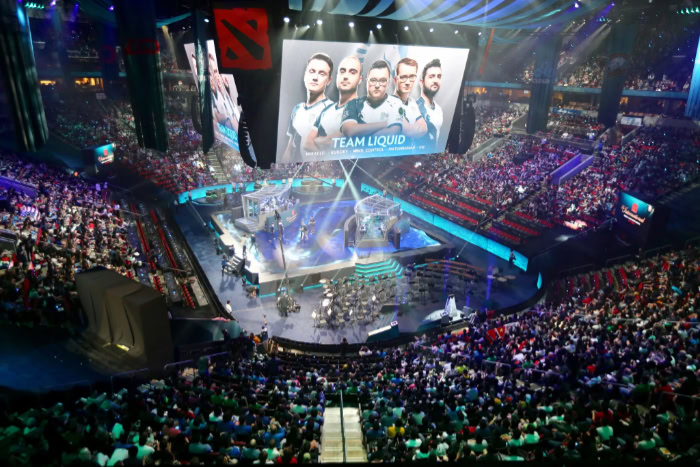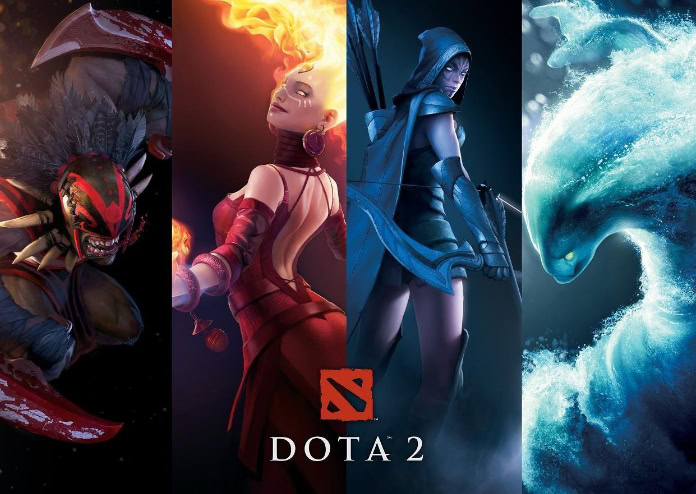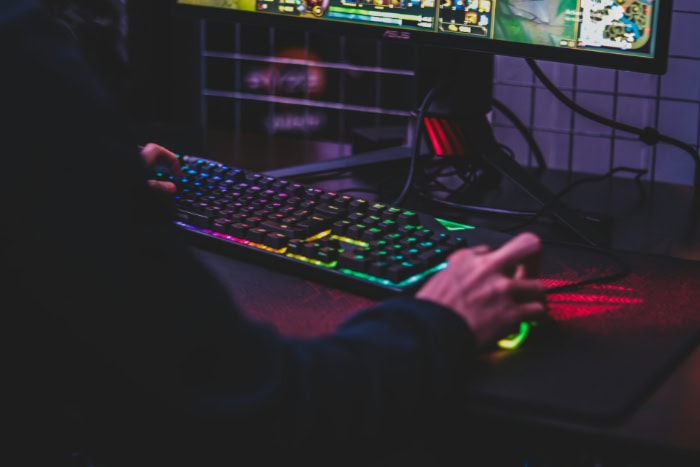Why Is Dota 2 So Incredibly Popular?

What makes a game stand the test of time in an industry where trends shift overnight? For over a decade, Dota 2 has not only endured but thrived, commanding millions of players and fans worldwide. Known for its unmatched complexity and intensity, this multiplayer online battle arena (MOBA) game offers a level of strategic depth that keeps veterans engaged while constantly challenging newcomers.
Its influence extends far beyond the screen, shaping the esports landscape and fostering a community deeply invested in its evolution. But what drives this enduring success, and why does its allure remain so strong despite fierce competition?
Unparalleled Strategic Depth and Gameplay Innovation
Dota 2 is renowned for its extraordinary strategic complexity, offering players a gaming experience that is as challenging as it is rewarding. Each match is a dynamic battlefield where success depends on careful planning, sharp tactical decisions, and seamless execution.
The game's design emphasizes player choice and adaptation, ensuring no two matches are ever the same. This unparalleled depth is a major reason why Dota 2 continues to attract millions of players and remains a cornerstone of competitive gaming.
Hero Diversity and Complexity
At the heart of Dota 2 lies its roster of over 126 heroes, each with distinct abilities, roles, and playstyles. From spell-casting wizards to destructive melee fighters, the diversity of heroes ensures an unmatched level of variety and creativity.
Players must not only master the abilities and nuances of their chosen hero but also consider how different heroes interact as a team. A well-coordinated lineup can mean the difference between victory and defeat, as certain combinations can create devastating synergy or cleverly counter an opponent’s strategy.
The depth of hero complexity also rewards deep knowledge and experimentation. For instance, some heroes have abilities that work best in specific situations, while others require exceptional mechanical skill to unlock their full potential.
This variety makes every match a learning experience, where players can refine their skills and expand their understanding of the game. The sheer number of possibilities helps ensure that the game never feels predictable, even for seasoned veterans.
Dynamic Meta and Updates
Dota 2 thrives on constant evolution, and much of its longevity can be credited to the dynamic nature of its gameplay. Valve, the game’s developer, frequently introduces balance patches that adjust heroes’ abilities, tweak in-game items, or add new mechanics altogether.
These updates keep the competitive meta—the prevailing trends and strategies—fresh and exciting. Players and teams are always adapting to shifts in game balance, devising new strategies to outwit their opponents.
Seasoned players are drawn to how these updates influence the game at every level, from casual matchmaking to the highest tiers of professional play. A hero or item that was once considered weak might suddenly become essential after a patch, while others may be toned down to maintain competitive integrity.
This constant state of flux ensures that the game evolves alongside its player base, demanding innovation and keeping players engaged.
Skill-Based Progression
Few games reward personal growth as much as Dota 2. The high skill ceiling ensures that even the most experienced players have room to improve, making mastery a long-term and fulfilling journey.
Players must hone a variety of skills, including precise mechanics, map awareness, and strategic decision-making. Success often depends on how well a player can balance individual performance with teamwork, as Dota 2’s 5v5 format places significant emphasis on coordination.
The progression system in Dota 2 isn’t tied to levels or stats, but rather to the player’s ability to learn from each match. Whether it’s improving timing, predicting an enemy’s movements, or better communicating with teammates, growth is always tied to skill.
For those who invest the time, the satisfaction of mastering such a complex game is unparalleled. It’s this rewarding sense of progression that keeps players coming back, match after match, year after year.
Thriving Esports Ecosystem and Community Investment

Dota 2’s prominence in the esports world is unmatched, standing out as a game that has continually shaped competitive gaming’s evolution. Beyond its complex mechanics and high-pressure gameplay, the game has fostered an environment of deep community engagement and global competition.
The International and Crowdfunding
Few events in esports command the same level of awe and excitement as The International, Dota 2’s annual world championship. What sets this tournament apart is its jaw-dropping prize pools, famously reaching peaks of over $40 million.
Unlike traditional funding models, much of this prize money is fueled directly by players through the purchase of in-game items like Compendiums and Battle Passes. This crowdfunding model has transformed The International into a unique phenomenon where the community actively contributes to its grandeur.
Beyond its financial scale, The International represents the pinnacle of competitive Dota 2. The tournament showcases the world’s elite teams battling for glory, captivating millions of fans who tune in to witness unforgettable moments, dramatic comebacks, and astonishing plays.
It has become more than just an esports event; it’s a yearly celebration of skill, strategy, and dedication that defines Dota 2 as a global competitive platform.
Global Competitive Scene
Dota 2’s competitive landscape is not limited to just one marquee event. The game thrives on a robust global ecosystem consisting of regional leagues, Majors, and grassroots tournaments.
Regional leagues ensure that professional teams and players remain active year-round, providing consistent opportunities to compete and grow. Majors, on the other hand, act as international showcases where top teams from different regions collide, raising the stakes and testing their adaptability against diverse playstyles.
Grassroots tournaments also play an integral role in shaping the competitive scene. From community-hosted events to amateur leagues, these platforms offer an entry point for aspiring players to break into higher tiers of competition.
Together, this layered structure sustains engagement throughout the year, not only for players but also for fans who follow the journey of their favorite teams and personalities.
Community-Driven Content
Dota 2’s community is one of its greatest strengths, contributing significantly to the game’s longevity and appeal. Talented creators enhance the game’s ecosystem by designing custom modes, mods, and maps that introduce new ways to experience Dota 2 beyond its core gameplay.
These creations range from whimsical mini-games to deeply strategic scenarios, appealing to players seeking variety or relaxation after high-stakes matches.
Fan creations extend beyond gameplay modifications, with contributions like artwork, story-driven content, and live-streaming elevating the culture around Dota 2. In-game cosmetic items, many of which are community-designed, further demonstrate the creativity of the player base.
Valve’s willingness to integrate these fan-driven elements into the game ensures a mutually rewarding relationship between the developers and the community.
This collaborative environment helps define Dota 2 as more than just a competitive game. It is a living, breathing entity shaped by the collective input of millions of players and fans.
Whether through professional competition or creative endeavors, the community remains deeply invested in what makes Dota 2 special.
Balancing Accessibility with Niche Appeal

Dota 2 walks a fascinating line between being a game that appeals to millions of casual players and remaining deeply rooted in its hardcore, niche community. Its blend of accessibility through its free-to-play model and the daunting complexity of its mechanics creates a distinct identity that appeals to gamers of all levels.
Free-to-Play Model
One of Dota 2’s biggest strengths is its commitment to being entirely free-to-play. Players can access the full roster of over 126 heroes right from the beginning, eliminating the need to unlock characters through grinding or purchasing.
Unlike many other games in the competitive space, Dota 2 avoids pay-to-win mechanics entirely, ensuring that every match is determined by skill, strategy, and teamwork rather than monetary investment.
Cosmetic microtransactions play a major role in funding the game’s ongoing development and updates. Players can purchase skins, alternate hero designs, and other visual enhancements without impacting gameplay.
This approach not only provides financial support to the game but also respects the competitive integrity of its core design. The result is a game that remains accessible to anyone, regardless of budget, while offering optional customizations for those who want to personalize their experience.
New Player Challenges
For all its accessibility, Dota 2 is notorious for its steep learning curve, often considered one of the most challenging games for beginners to grasp. Valve has implemented various systems to ease new players into its complex mechanics.
Tutorials introduce core concepts, while AI matches allow players to practice in a low-pressure environment. Additionally, community-made guides, available directly in the game’s interface, help players learn optimal strategies for their chosen heroes.
Despite these efforts, the sheer depth of the game can still feel overwhelming to newcomers. With over a hundred heroes, dozens of items, and countless strategies to learn, mastering even the basics can take significant time and effort.
Veterans often describe learning Dota 2 as a rewarding but difficult process, where moments of progress feel particularly satisfying due to the challenges overcome. For those willing to dedicate time and patience, the rewards of understanding its nuances are worth the investment, making long-term engagement deeply fulfilling.
Cultural Legacy
Dota 2 owes much of its global appeal to the legacy it carries from its origins as a Warcraft III mod. For older gamers, it evokes a sense of nostalgia, harking back to the early days of the online multiplayer gaming scene.
Many players who grew up playing the original Defense of the Ancients mod find a deep, emotional connection to Dota 2, which captures the essence of its predecessor while building upon it with modern features and polish.
Valve’s involvement as the game’s developer also enhances its credibility and appeal. Known for creating legendary franchises like Half-Life, Counter-Strike, and Portal, Valve’s reputation for quality and innovation has played a major role in attracting players to Dota 2.
The company’s commitment to supporting the game with updates, events, and community engagement has reinforced Dota 2’s position as a cultural phenomenon that spans generations of gamers.
Overall, Dota 2’s ability to balance a welcoming entry point for new players with a deep, rewarding experience for veterans has solidified its place as a timeless classic. Its unique combination of nostalgic charm, developer support, and challenging complexity ensures it continues to thrive in the competitive gaming world.
Psychological and Social Drivers of Retention

Dota 2’s immersive experience goes beyond its strategic gameplay and esports prestige, tapping into psychological and social elements that keep players deeply engaged. The game offers a blend of emotional highs and collaborative dynamics, creating lasting bonds and memorable experiences.
Through teamwork, thrilling match moments, and the influence of community-driven content, Dota 2 has become a game that players don’t just play—they live.
Teamwork and Social Bonding
One of the defining aspects of Dota 2 is its emphasis on teamwork. Every match features two teams of five players, working in harmony to achieve a shared goal: the destruction of the enemy’s Ancient.
Success in Dota 2 depends on strategic coordination, communication, and an understanding of each teammate’s role. This reliance on collaboration fosters camaraderie among players, as triumphs feel collectively earned and failures are shared moments of reflection.
The social component of Dota 2 is particularly strong for those who play with friends or regularly team up with others. Bonds are forged through the intensity of competition, where teammates must trust one another and adapt to ever-changing situations.
Over time, players build meaningful connections, whether through shared victories or the emotional catharsis of hard-fought losses. For many, the friendships and memories created in Dota 2 are as compelling as the gameplay itself.
Adrenaline of High-Stakes Matches
Few games match the emotional rollercoaster of a heated Dota 2 match. With its comeback mechanics and unpredictability, every game is an opportunity for dramatic narratives to unfold.
Matches often swing back and forth, where seemingly insurmountable challenges can be overcome with clever strategy and skillful execution. The thrill of turning a bad situation into a victorious one keeps players on the edge of their seats, making every win feel hard-earned and satisfying.
The stakes feel even higher during competitive games, where players invest significant time and effort to outplay their opponents. Moments of triumph—whether it be landing the perfect spell, executing a game-winning teamfight, or coordinating a last-second defense—trigger intense feelings of accomplishment.
This emotional engagement is amplified by Dota 2’s highly dynamic gameplay, which ensures no two matches are identical.
Comeback moments are particularly exhilarating, as they showcase the possibility of turning the tide even when hope seems lost. Players are drawn to the adrenaline rush of these high-pressure scenarios, making even the most challenging matches feel rewarding.
Streaming and Content Creation
The rise of streaming platforms like Twitch and YouTube has significantly boosted Dota 2’s visibility and global appeal. With thousands of streamers showcasing their gameplay, strategy discussions, and commentary, the community enjoys a constant flow of engaging content.
Fans can watch professional games, learn from skilled players, or simply enjoy entertaining moments, all of which contribute to Dota 2’s cultural significance.
Meme culture and fan-created content add another dimension to the game’s popularity. From humorous videos and artwork to iconic catchphrases inspired by professional matches, Dota 2 is more than just a game—it’s a shared experience that transcends gameplay.
Streamers and influencers play a central role in cultivating this environment, bridging the gap between casual players, die-hard fans, and professional competitors.
Conclusion
Dota 2 stands as a remarkable example of gaming excellence, combining unparalleled complexity, competitive integrity, and thriving community involvement to create an experience that defies typical market expectations. Its depth of strategy and innovation has provided players with endless opportunities to grow, while the electrifying esports scene and record-breaking tournaments like The International have captured the imagination of fans across the globe.
The game’s meticulous balance between being free-to-play and offering a high skill ceiling ensures that players of all backgrounds can immerse themselves in its intricate world.
However, its steep learning curve undeniably presents a challenge for newcomers, requiring patience and dedication to fully appreciate its intricacies. Yet, for those willing to invest the time and effort, Dota 2 offers unmatched satisfaction, rewarding players with moments of triumph, personal growth, and camaraderie.
The game’s cultural legacy and the contributions of its passionate community have transformed it into more than just a title—it’s a phenomenon that inspires loyalty and admiration from millions.
In an era where gaming trends often favor simplicity and short-term engagement, Dota 2 continues to thrive as a “hardcore” titan of esports. Its ability to endure and evolve while staying true to its competitive roots is a testament to the unique experience it offers.
For both casual players and die-hard fans, Dota 2 remains a timeless masterpiece, a game that challenges, excites, and brings people together in its ever-intense quest for victory.


